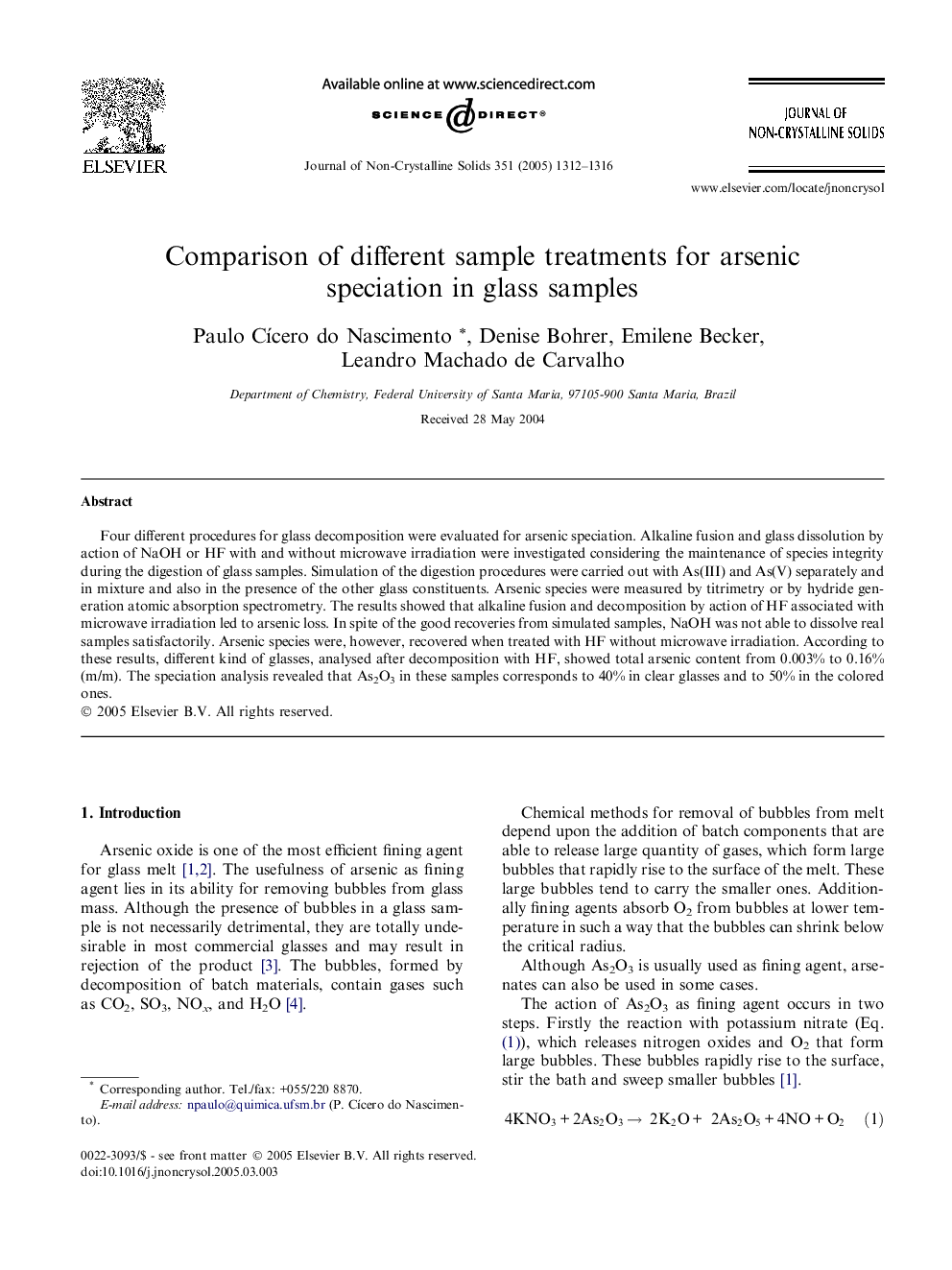| Article ID | Journal | Published Year | Pages | File Type |
|---|---|---|---|---|
| 9778114 | Journal of Non-Crystalline Solids | 2005 | 5 Pages |
Abstract
Four different procedures for glass decomposition were evaluated for arsenic speciation. Alkaline fusion and glass dissolution by action of NaOH or HF with and without microwave irradiation were investigated considering the maintenance of species integrity during the digestion of glass samples. Simulation of the digestion procedures were carried out with As(III) and As(V) separately and in mixture and also in the presence of the other glass constituents. Arsenic species were measured by titrimetry or by hydride generation atomic absorption spectrometry. The results showed that alkaline fusion and decomposition by action of HF associated with microwave irradiation led to arsenic loss. In spite of the good recoveries from simulated samples, NaOH was not able to dissolve real samples satisfactorily. Arsenic species were, however, recovered when treated with HF without microwave irradiation. According to these results, different kind of glasses, analysed after decomposition with HF, showed total arsenic content from 0.003% to 0.16% (m/m). The speciation analysis revealed that As2O3 in these samples corresponds to 40% in clear glasses and to 50% in the colored ones.
Related Topics
Physical Sciences and Engineering
Materials Science
Ceramics and Composites
Authors
Paulo CÃcero do Nascimento, Denise Bohrer, Emilene Becker, Leandro Machado de Carvalho,
